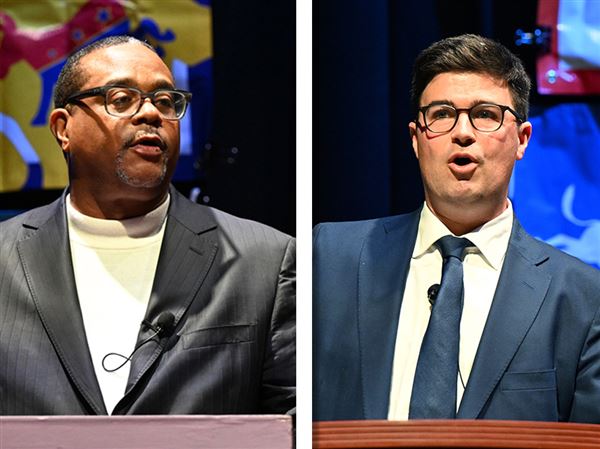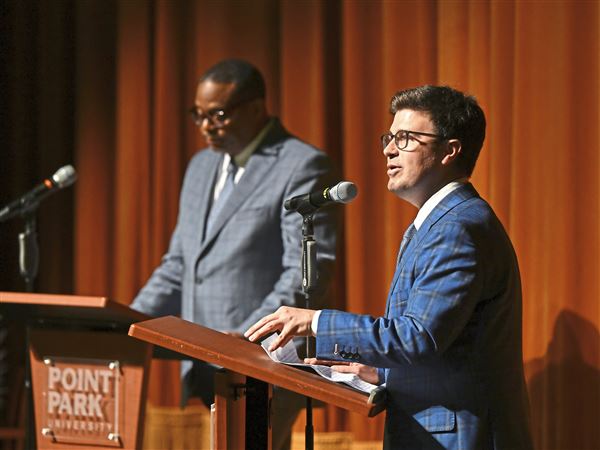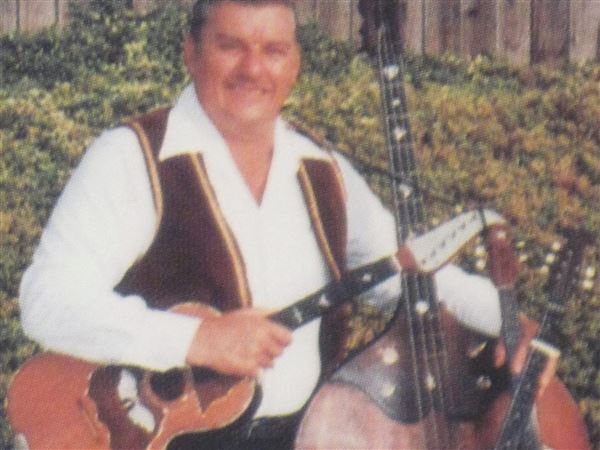First of two parts
When Jennifer Thompson-Cannino learned that the man she had accused of raping her had been found innocent through DNA evidence, "my reaction was utter disbelief," she said.
Ms. Thompson-Cannino, who is white, had been a college student in North Carolina when she was attacked in 1984, and her African-American rapist had spent more than 20 minutes with her.
"I studied every single detail on his face," she said. "I was going to make sure he was going to be put in prison." Later, after looking at suspect photos and viewing a lineup, "I was confident I had picked the right guy, and he was going to jail, and if there was a death penalty, I would be there to pull the plug."
Based largely on her emphatic testimony, Ronald Cotton was convicted and spent 11 years in prison, until DNA showed that another convict named Bobby Poole had actually raped her.
As she tried to grapple with this new information, Ms. Thompson-Cannino thought that when police showed her a photo of Mr. Poole, "my mind would immediately say, 'Oh my God, I was wrong.' "
"But Bobby Poole's picture didn't have that impact on me at all. And when he didn't look familiar, I just thought I had failed everyone, and that I was a terrible human being."
But she wasn't a failure. She was just normal.
Study after study has shown that all of us have difficulty recognizing individuals from other racial or ethnic groups, and that the phenomenon, known as the cross-race effect, is even worse for people in a majority population group.
White Americans have trouble recognizing black Americans. White French people have trouble recognizing Arab immigrants. Chinese people have trouble recognizing Japanese people.
The story of Jennifer Thompson-Cannino and Ronald Cotton, both 48, is remarkable because they have become close friends over the last 15 years. They make public appearances together to talk about the flaws with eyewitness testimony, and last year, they co-wrote a book, "Picking Cotton: Our Memoir of Injustice and Redemption" (St. Martin's Press).
Over that period, Ms. Thompson-Cannino said she has learned how it was possible for her brain to make the mistakes that led her to identify the wrong man as her rapist.
She believes the cross-race effect was one of those mental errors.
"Because of my public speaking, I'm now in contact with more races than most white women I know," she said in an interview this month, "but I don't think my ability to discriminate among black faces has gotten any better."
Mr. Cotton also thinks the cross-race effect helped put him behind bars.
To him, he and Mr. Poole don't look anything alike. "But about 90 percent of white people think all black people look alike. It's sad but it's true," he said in an interview.
The story of these two unlikely friends has become fairly well known, but what people may not realize is how common these kinds of mistakes are.
Of the first 239 people exonerated of their crimes through DNA evidence, 179 -- about three-quarters -- had been convicted based on inaccurate eyewitness identification, according to the Innocence Project in New York City.
And of those cases, about four out of 10 involved cross-race misidentifications.
The struggle to recognize other-race faces begins within the first year of life as part of the natural developmental process.
Olivier Pascalis, an infant researcher at the French National Center for Scientific Research, has done studies showing that 3-month old infants can tell different monkey faces apart, but can no longer do so by the age of 9 months.
In another study, he showed that English and Chinese infants were equally good at 3 and 6 months in discriminating between faces of the opposite race, but "Chinese infants at 9 months of age were showing discrimination only for Chinese faces, and vice-versa."
He is not sure exactly why that happens, but it seems clear that we are designed to start focusing in on the most prevalent parts of our environment at a young age.
The same thing happens with language, he noted. Infants are born with the ability to hear the sounds of any language around them, but soon begin to home in on their native tongue.
"I tell my students that this all may be similar to what happens when you train to become a good tennis player. You have to train the muscles that are used in that sport, and if you also started out being a good soccer player, you may need to lose some of those abilities to become good at tennis."
While most experts believe that the cross-race effect is a natural part of human development, that doesn't make it any less of a problem in the criminal justice system in America, says Christian Meissner, a program director in law and social sciences at the National Science Foundation in Arlington, Va.
American courts rely more heavily on eyewitness identifications to convict defendants than in several other nations, he said, and "we also know that whites are overrepresented as victims and witnesses and blacks are overrepresented as defendants" in criminal cases.
In an interview last month in Virginia, Dr. Meissner emphasized that racial prejudice is not the driving force in our struggle to recognize faces outside our own group.
Yet the cross-race phenomenon "is often the start of a process that leads to wrongful conviction," he said.
"What happens is, a witness identifies a suspect. The suspect then becomes the culprit. The police stop gathering information on any other possible suspects.
"Then, the officer goes to a forensic scientist and says, 'I have a suspect; I know it's my guy, but I need the evidence to go with it.'
"And finally, he has the suspect come in and he interrogates him in ways that too often lead to a false confession."
The chain of events often starts, though, because a white witness makes an honest mistake in identifying a black suspect from a photo array or a physical lineup.
Dr. Meissner likens the situation to someone who is partially deaf undergoing a hearing test.
The doctor will play sounds in each ear, and ask the person to raise his hand when he hears the signal.
A hard-of-hearing person will often "have a loose criterion, so anything he thinks he hears, he's throwing up his hands."
In the same way, when police ask a witness to come in to see if he can identify a suspect, "most witnesses assume that the target is present, because why would the police bring them in if the target wasn't present?"
If the suspect belongs to another race, the witness may then identify someone who looks similar to the face he remembers, but who is not that person.
It's not usually done out of spite or bias, Dr. Meissner said, but because the witness "doesn't want to say he can't remember somebody. He wants to please the officers."
Jennifer Thompson-Cannino can relate to that.
After she picked out Ronald Cotton's photo from an array of images at the Burlington, N.C., police station, she remembers asking, "Did I do OK?" She asked the same thing after picking him out of a lineup.
What she didn't know at the time was that her efforts to recall her attacker's face were "contaminating" her brain, as she put it.
She believes the composite sketch she helped police create looks more like Bobby Poole than Ronald Cotton, "but by the time I picked Ronald Cotton out of that photo array, he was cemented in my mind, and now, I cannot actually go back to that night I was raped, because overlaying that memory is the composite sketch of the man who raped me and overlaying that is the photo array that I looked at."
Another problem witnesses face is the natural tradeoff in the brain between categorization and individuation.
In other words, when we see a face, we can either quickly put it in a category, or we can spend more time trying to understand its individual features. And generally, we tend to categorize faces of another race, and individualize faces of our own race.
That contributes to false identifications, Dr. Meissner said.
"So for instance, a white person may say, 'I remember this white face, because he reminded me of Matt Damon, but he had a very peculiar nose and a mark by his left ear.' But take another instance: a black male who is bald. The same person may say, 'I remember this guy -- he's bald.' What's the problem with that? It's because it's not a diagnostic feature -- it's too broad and it doesn't combine featural distinctions."
We're apt to do this with other-race faces not only because most of us are exposed to fewer of them, but because we don't have as much motivation to get to know them as individuals, researchers say.
Vicki Bruce, a pioneering face researcher in Britain, said in an October interview that her experience with dogs helps prove that point.
"If you're a dog owner as I am, and you have one breed of dog, you probably pay little attention to the differences between instances of another breed of dog. I've become quite good at noticing the differences between border collies, because that's what I own, but before I had that kind of dog, I would have just put border collies in the border collie bin, wouldn't I?"
Michael Tarr, a face researcher at Carnegie Mellon University, makes the same point by noting the differences between typical people and car and bird experts.
"Everybody sees a lot of cars in their life, but it's not the same as someone who really cares about cars. We also see a lot of birds, but we're not like the people who are trained to recognize birds."
While prejudice is not the main reason we have trouble recognizing people from other races, it can go along for the ride, the scientists say.
"If I have significant negative racial attitudes," Dr. Meissner said, "I'm less likely to engage in contact with other-race persons, and as a product of my contact, not my attitudes, I show the cross-race effect."
Racial attitudes also show up unconsciously in experiments like one Dr. Tarr and his colleagues did last year.
In that study, they showed photos of white and black faces to white students. They then showed letters that were either positive words (love), negative words (hate) or nonsense words (malk).
The students were asked to tap a computer key to say whether the letters composed a real word. When they did that, it took them fractionally longer to associate the positive words with black faces than with white faces.
They then trained some of the white students how to differentiate black faces better. The other white students were simply asked to decide whether faces were black or Asian.
When the group that was taught how to detect individual differences in black faces did the face-word test a second time, the slight delay in linking positive words to black faces disappeared. There was no change, though, in the group that did the categories exercise.
The experiment showed that without special training, "perceptual 'lumping together' prompts social 'lumping together.' And once stereotypes, positive or negative, are associated with some members of a social group, the fact that individuals within that group are less differentiated perceptually and socially makes it more likely these biases will be extended to all of its members," the study authors wrote.
The study also offered hope, though, that if people consciously learn to individualize others, they can sharply reduce this "lumping" bias.
In a similar study, Temple University psychologist Kareem Johnson found that after students were shown video clips that made them feel happy, they could do a better job of telling other-race faces apart.
The study was based on the "broaden-and-build" theory, which suggests that when people are in a positive mood, they are more creative and open-minded and see things in a more holistic way.
The study showed that students who saw joy-inducing videos were less likely to clump black people into a category.
From an evolutionary perspective, Dr. Johnson said, "one thing that's very nice about categories is that they enable you to make very quick judgments. When you're in a situation of threat, categories can be very useful to detect us vs. them.
"But when you're in a positive mood, you're in a condition of safety, so there's less need for that."
Dr. Johnson even speculated that if crime witnesses were treated well when they came into a police station to make an identification -- given a cup of coffee and greeted in a friendly way, for instance -- they might do a better job of recognizing suspects.
But the science foundation's Dr. Meissner is skeptical that the cross-race effect can be altered that much once someone has reached adulthood.
The best way of dealing with the natural difficulty white people have in identifying black people, he said, is to educate police officers, prosecutors and judges about the challenges of such eyewitness testimony.
The most important lesson he tries to impart is "just because you get a suspect nominated by an eyewitness, it doesn't mean that's the right suspect, and you should take the investigative process slowly, carefully and independently on each piece of evidence."
For Ms. Thompson-Cannino and Mr. Cotton, their former categories -- victim and rapist -- have been replaced by a new one: friend.
After Mr. Cotton was released from prison, it took Ms. Thompson-Cannino two years to work up the courage to ask to meet with him. When they finally sat across from each other, she told him, "If I spent the rest of my life telling you how sorry I am, it wouldn't come close to how I feel. Can you ever forgive me?"
And Mr. Cotton did. "I grabbed her by her hands," he said, "and I told her she didn't have to worry about anything or that she had to go through life looking over her shoulder thinking I might harm her, and that I had forgiven her years ago."
They stood and hugged and cried. And then, slowly, they became best friends.
"For Ron and I," Ms. Thompson-Cannino said, "the journey has just been doing the next thing that seemed to make sense for us, and now he is one of my best friends and we love each other sincerely.
"I will always have his back and he will always have my back."
Tomorrow: A more accurate way of making criminal suspect sketches
First Published: December 26, 2010, 5:00 a.m.
















